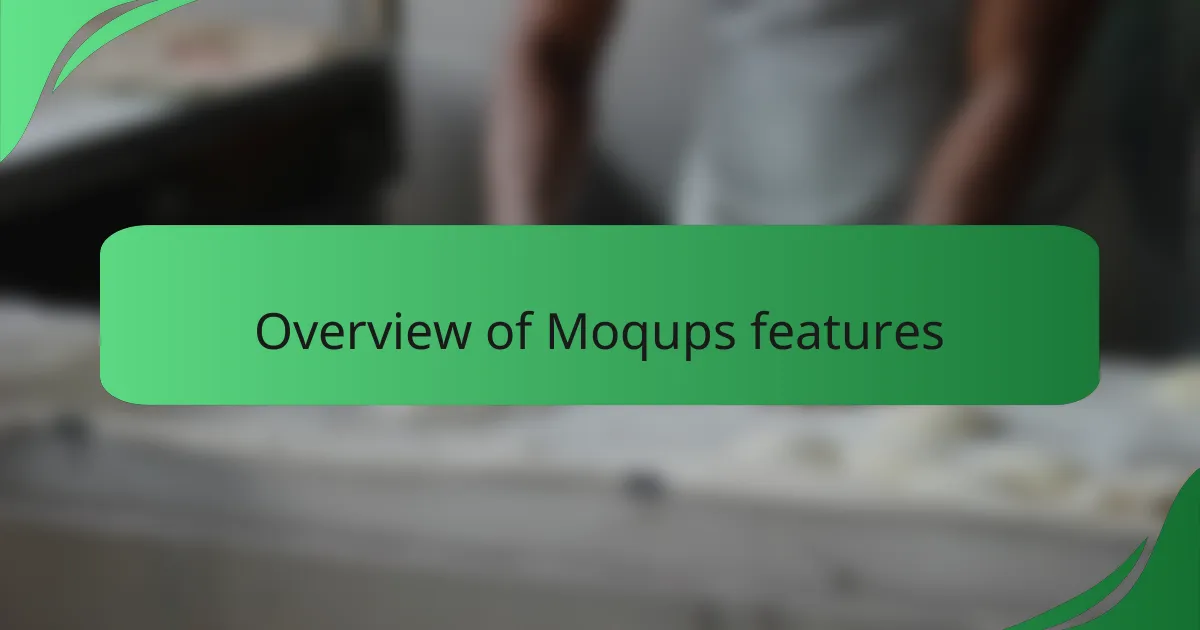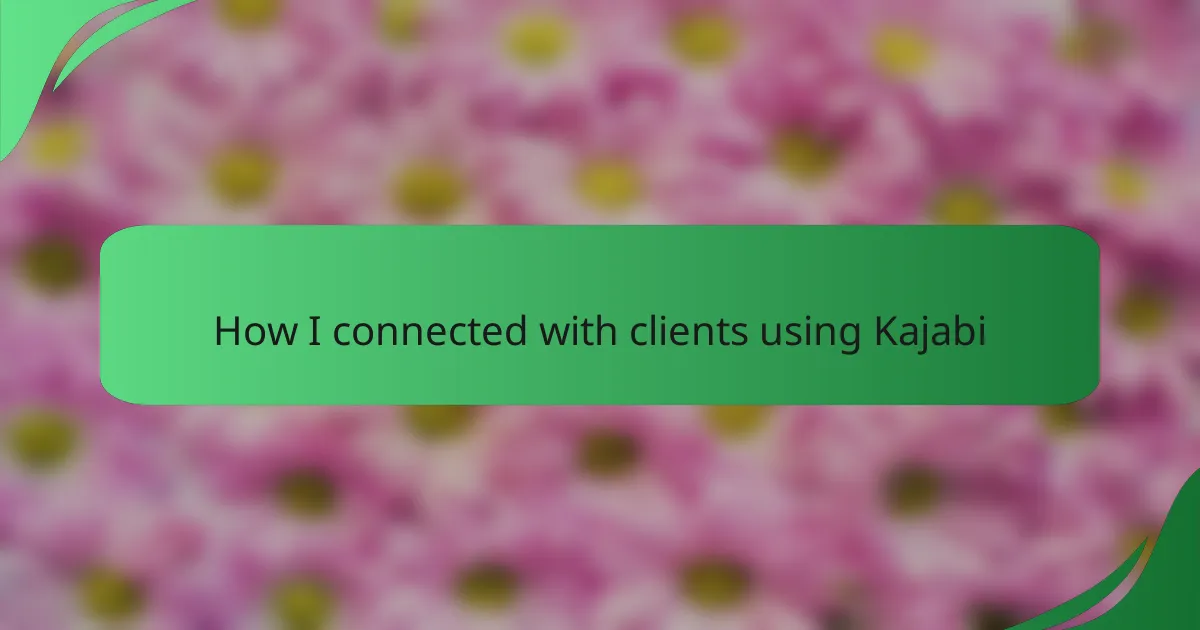Key takeaways
- Understanding interface design principles, like consistency and feedback, is crucial for enhancing user experience and engagement.
- Wireframing serves as a vital tool for quick iterations, effective communication, and identifying usability issues early in the design process.
- Moqups features, such as real-time collaboration and a library of templates, facilitate efficient and intuitive wireframing.
- Embracing simplicity, feedback, and collaboration during wireframing can significantly improve the clarity and effectiveness of design outcomes.

Introduction to interface design principles
When I first delved into the world of interface design, I quickly realized that it’s much more than aesthetics; it’s about creating meaningful interactions. Understanding interface design principles is essential because they guide the user experience (UX) and help ensure efficiency. For instance, using consistent layouts or familiar symbols can enhance user engagement—something I’ve noticed in my own work with tools like Moqups.
In my experience, applying these principles effectively can lead to a design that feels intuitive. I remember when I first attempted wireframing; it was a blend of excitement and uncertainty. But utilizing solid design principles transformed my conceptual chaos into structured, user-friendly layouts that truly resonated with users.
| Interface Design Principle | Description |
|---|---|
| Consistency | Maintaining uniformity in design elements to enhance familiarity. |
| Feedback | Providing users with timely responses to their actions to improve interaction. |
| Efficiency | Streamlining processes to minimize user effort and maximize satisfaction. |
| Affordance | Designing elements to suggest their function and usability instinctively. |

Understanding wireframing basics
Understanding wireframing basics involves grasping how these low-fidelity designs serve as visual blueprints for digital interfaces. When I first started using Moqups, the simplicity of dragging and dropping elements into my wireframe was both exhilarating and daunting. I realized that creating these basic structures helped clarify my ideas and ensured that I focused on user experience right from the outset.
Wireframing is essential for several reasons:
– It allows for quick iterations, helping you refine your design without significant time investment.
– It serves as a point of communication among team members, clarifying vision and functionality early in the process.
– Wireframes help identify potential user flow issues before jumping into detailed design.
– They can save costs by catching mistakes early, reducing the need for extensive revisions later.
– The visual aspect makes it easier for clients to understand and provide feedback.
In my experience, the clarity that comes from a well-constructed wireframe sets a strong foundation for the rest of the design process.

Benefits of wireframing in design
Wireframing in design has honestly transformed the way I approach projects. It allows me to visualize the structure and flow of an interface before getting tangled in details like colors and fonts. On many occasions, I’ve found that spending time on wireframes saved me from costly revisions later in the process, making it feel like a safety net during the chaotic stages of design.
From my experience, the benefits of wireframing extend far beyond just layout planning. It fosters clear communication among team members and stakeholders, helping everyone get on the same page early in the design process.
- Enhances clarity by providing a visual representation of the interface.
- Facilitates early feedback, which can save time and resources.
- Encourages collaborative discussions, leading to more innovative solutions.
- Helps in identifying potential usability issues before development begins.
- Serves as a reference point for designers throughout the project lifecycle.

Overview of Moqups features
Moqups offers a streamlined and intuitive interface that significantly enhances the wireframing process. Personally, I found its drag-and-drop functionality incredibly user-friendly, making it easy to create layouts without any steep learning curve. The real-time collaboration feature truly stood out during my projects, allowing my team and me to brainstorm and iterate ideas seamlessly.
One of the standout features is its diverse library of pre-made components and templates, which can save a great deal of time. From basic shapes to complex UI elements, everything is easily accessible and customizable, which I appreciated when trying to visualize different concepts quickly.
- Intuitive drag-and-drop interface
- Real-time collaboration capabilities
- Extensive library of pre-made templates and components
- Built-in commenting system for feedback tracking
- Export options for various formats like PNG, PDF, and HTML

My journey with Moqups
As I dove into wireframing with Moqups, I was immediately struck by its intuitive interface. The drag-and-drop feature made it feel like I was simply sketching ideas on paper, yet I knew I had the power of digital tools at my fingertips. It was liberating to see my thoughts materialize so quickly, transforming my abstract ideas into clear visuals.
But, it wasn’t just about the tools; it was about the journey. I remember the moment I completed my first wireframe; the satisfaction was palpable. The collaborative features allowed me to share my designs easily, leading to productive feedback sessions that shaped my project significantly.
- Quick setup with easy onboarding experience.
- Intuitive drag-and-drop interface.
- Excellent collaboration tools for team feedback.
- Ability to create interactive prototypes, enhancing the design process.
- Versatile templates that saved time and sparked creativity.

Lessons learned from my experience
Throughout my journey with wireframing in Moqups, I learned that clarity is king. Initially, I often overloaded my sketches with too much detail, which ended up causing confusion rather than insight. Over time, I discovered that less is more; stripping down to the essentials allowed me to communicate ideas more effectively to my team.
Another valuable lesson was the importance of iteration. My early attempts at wireframing felt like a final product, when in reality, they were just stepping stones. Each revision became an opportunity to refine my ideas and incorporate feedback, ultimately leading to a more polished design. The collaborative aspect of Moqups also added a layer of creativity, as bouncing ideas off colleagues brought fresh perspectives that I had not considered.
Here are some key takeaways from my experience:
- Prioritize simplicity: Focus on conveying the core idea with minimal distractions.
- Embrace feedback: Use each iteration to improve your wireframes significantly.
- Collaborate actively: Engage with your team to gain different insights and perspectives.
- Balance detail and interactivity: Aim for just enough detail to convey functionality without overwhelming users.
- Stay adaptable: Be ready to pivot based on feedback and new ideas throughout the design process.

Tips for effective wireframing in Moqups
When I first began wireframing in Moqups, one key tip that I found invaluable was the importance of starting with low-fidelity sketches. This approach allowed me to get ideas down quickly without getting bogged down in details. I often ask myself: how might this influence user navigation? By focusing on overall structure rather than specifics initially, I could ensure a fluid user flow, allowing for easier revisions later.
Another essential tip is to utilize the extensive library of components Moqups provides. I remember when I was struggling to decide on button styles for my project; having pre-made options at my disposal not only streamlined the process but also sparked unexpected creativity. Using these templates can help to maintain consistency throughout the wireframe, which enhances intuitiveness for users navigating the design.
Lastly, I can’t stress enough how beneficial it is to share your wireframes with others early in the process. When I invited colleagues to review my drafts, their fresh perspectives often unveiled potential usability issues I hadn’t considered. How does your team engage in feedback? Embracing collaboration not only improves your design but also fosters a sense of collective ownership over the project, making it feel like a shared success.




